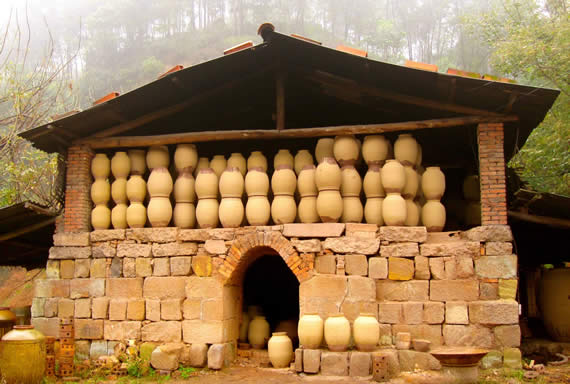Minyao: The Art of the Everyday

To fulfill an interest in providing a range of work, the Museum will feature the exhibition Minyao (peoples’ pottery): The Art of the Everyday. Renowned American ceramic artists John Stephenson, Marie Woo and Susan Stephenson supported by a grant from the Asian Cultural Council-Rockefeller Foundation traveled frequently to mainland China on a mission to research and document the kilns and pottery of numerous remote villages. It is the Museum’s distinct privilege to exhibit the ceramic work they discovered. The collection of work on view is the result of their concerted effort to honor and preserve a powerful, disappearing ceramic language of the Chinese people.
The following insights by Dr. Margaret Carney regarding Minyao pottery are taken from the original catalogue documentation of the exhibition. Margaret Carney is a ceramic historian with Ph. D. and Master's degrees in Asian art history, and a B. A: in anthropology/ archaeology. She is currently the Director of the Dinner Ware Museum, Ann Arbor, Michigan.
One could raise the question that if hundreds or even thousands of pots could be fired at one time in a traditional Chinese kiln, then what an unastonishing feat, it might seem to be-to "rescue" (collect) only 100 folk pottery vessels. The question isn't whether or not 100 or 1,000 or 100,1000 pots are documented, collected, and preserved. The investigation relates to the disappearance, for whatever reason, of traditional folk pottery-: making techniques, whether they be hand-building, throwing, jiggering, glazing, and/ or firing.
The majority of the Chinese people did not utilize imperial/ official wares, but rather people's ware, made at local private kilns. Preserving and documenting the Emperor's porcelain has been accomplished. Projects such as this one, the documenting and preserving of China's rapidly vanishing Minyao tradition, undertaken by ceramic artists, is a pioneering precedent which should be employed by others. Otherwise the question will be whether or not the Chinese minorities creating some of these wares in remote regions of China will be relegated to creating these pots for tourist consumption like the Native Americans in their pueblos or in re-enactment environments like Colonial Americans in Old Sturbridge Village.
Whether it is Chinese folk pottery or some other notable tradition, it will always be important to document and preserve significant aspects of people's daily lives. In the case of ceramics, they are frequently one if not the only earliest surviving artifacts from the most ancient cultures in the world. Before written language we have clay memories of early cultures. They serve as windows into the customs and traditions of the past. In China these glimpses into the past have previously focused on the lives of the imperial court - with their palace traditions and burial accouterments, and not the wares created by and for daily use by the majority of the people of China. These minyao or people's wares must now become the focus of preservationists, art historians and museum curators, as the world's rapid globalization obscures significant contributions from isolated cultures recognized by their pottery traditions.
Additional information concerning the Minyao exhibition pieces is located in the gallery where the work is displayed.